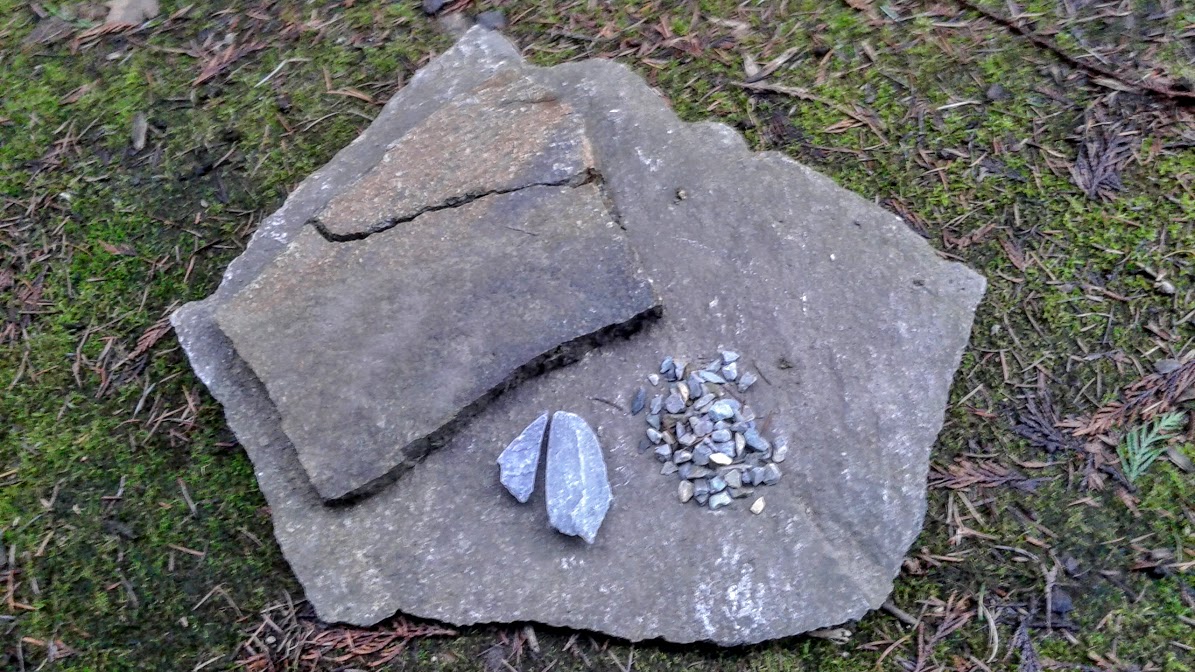
Today I went to the local landscape store, and met with a couple people in my bonsai club to help me select some rocks to purchase. My intention was to take a whole bunch of photos while shopping for rocks, but I felt so much like a kid in a candy store looking at all the different rock styles for sale. I completely forget to take photos. However, I did remember to take photos as soon as I got home and looked at my findings.
They had #boulders, #gravel, round rocks, angled rocks, pumice rocks, lava rocks, sedimentary rocks, granite, round rocks, rainbow colored river rocks, silvery rocks, dark rocks, etc.. Just looking at the raw materials harvested from the hills and rivers of the earth was deeply fulfilling for the rock enthusiast in me.
The type of bonsai landscape I plan to build will be made directly on top of #flagstone. Most of the flagstone for sale was cut to a more square shape, and extremely thick and heavy. The pieces that I selected were 40 pounds. Doesn't look like much, but is was heavy! The slab is at most an inch thick, and about a foot wide. We also chose to buy a matching flagstone that was cracked. Cracks are ideal in rock landscapes, because rocks break in the real world allowing for earth and plants to fill the gaps in between. I really liked the long crack between this rock because it is an obvious match, but not so a perfectly clean crack. I like that it is looks worn and weathered along the edge. We noticed that in the position we laid it out that the top stones appear to share the same outline as the base stone. This could become part of the design if I choose.
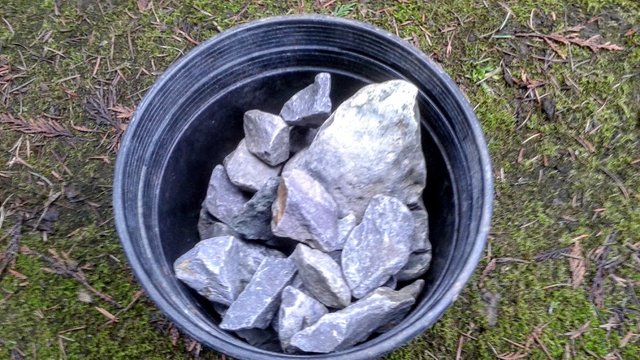
These are the type of stones I selected for building with. The aim was to find rocks of similar #texture, color, and material. I wanted different sizes and shapes, but they had to be small enough that they can be mounted to the base stone. I may decide to layer these up to create a mountain/cliff scene, but I don't want the entire thing to become so heavy and tall that I can't pick it up the whole thing easily by myself. Thinking ahead to the potential future, I may want to transport my finished landscape bonsai into my car to display it for exhibits.
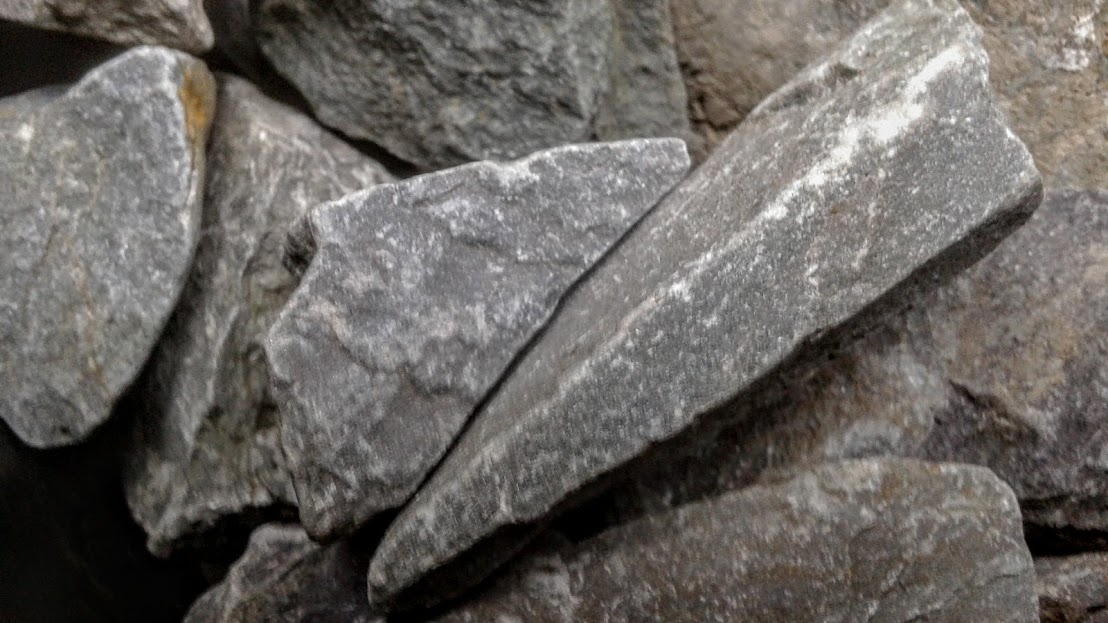
A key aspect I was advised to hunt for in a good rock is #interlocking sides. Any time we can find rocks that fit nicely together, as if they were once part of the same rock, that is a good thing. It becomes a more believable scene. Layered slab stones stacked on top of each other can resemble the plate-like strata layer of the earth. By lifting the stacked layers upward diagonally, we can simulate a massive upheaval that occurred in nature.
We were also picking a few matching rocks that had some irregularities on them. I can't remember the terms she was using to describe the features we were looking at. Some rocks had a natural concrete with ocean fossils attached to the edge. Other rocks had color irregularities that reminded me of metal ore veins.
All the photos I am posting of my own, I applied a strong color adjustment so you can see the texture and cracks better with less light reflection. Today was very cloudy, which is great for shadow-less photography without sun glare. Still my smartphone camera is not very good at showing some of the fine details on these rocks. The rocks are mostly a blue/gray shade, and it turns chalky white on the pulverized edges. The base stone is slightly more rusty/brown. I could not get a perfect match between the base stone and my building stones, but I think I can live with that since they will be on different height #layers.
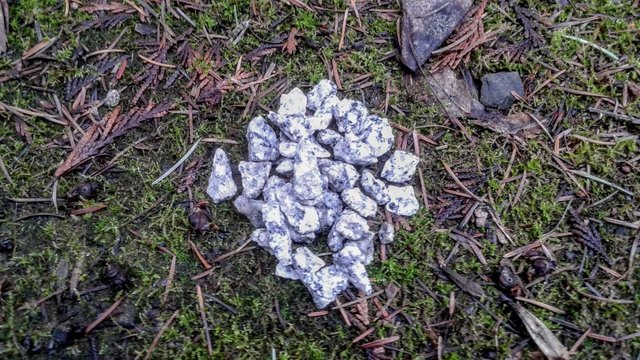
This white and black speckled #granite gravel looked perfect for a possible bonsai top decoration layered over the soil surface. Another option is to use this to make a pathway or river design along the landscape I build. Contrasting materials can be used on purpose to show a change from a rock, to earth, to water, or a man-made surface like a pathway. These are not the most natural looking rocks, but I think they are stunning. Anything that resembles a jewel or gemstone makes me perceive the rock as more valuable instantly. Granite has a shiny glittery sheen to it I adore. Bonsai is supposed to be lucky, and even help a person to attain wealth (they can sell for twice as much as what you paid for it after a few years of growth). I think a bonsai designed to have that sort of lucky/wealth/valuable theme might go well with these rocks.
Cost?
How much did all of these rocks cost?
Not as much as you might think.
Let's compare it to the price of a normal bonsai pot.
A really basic small bonsai pot normally costs $25 and above where I live. Plastic ones can be purchased or made cheaper, but they are not considered high quality for exhibiting. Larger pots can cost hundreds of dollars, because they are specially made to fit bonsai proportions, with proper drainage holes, feet, a matching dish, and an appealing surface color or glaze. For the 40 pounds of rocks I selected, the landscape store sold it to me for about $10 USD total. I'm starting to think making more landscape designs might be the best way to go for someone like me who wants to save money, and make money. I can make much bigger bonsai now for less cost.
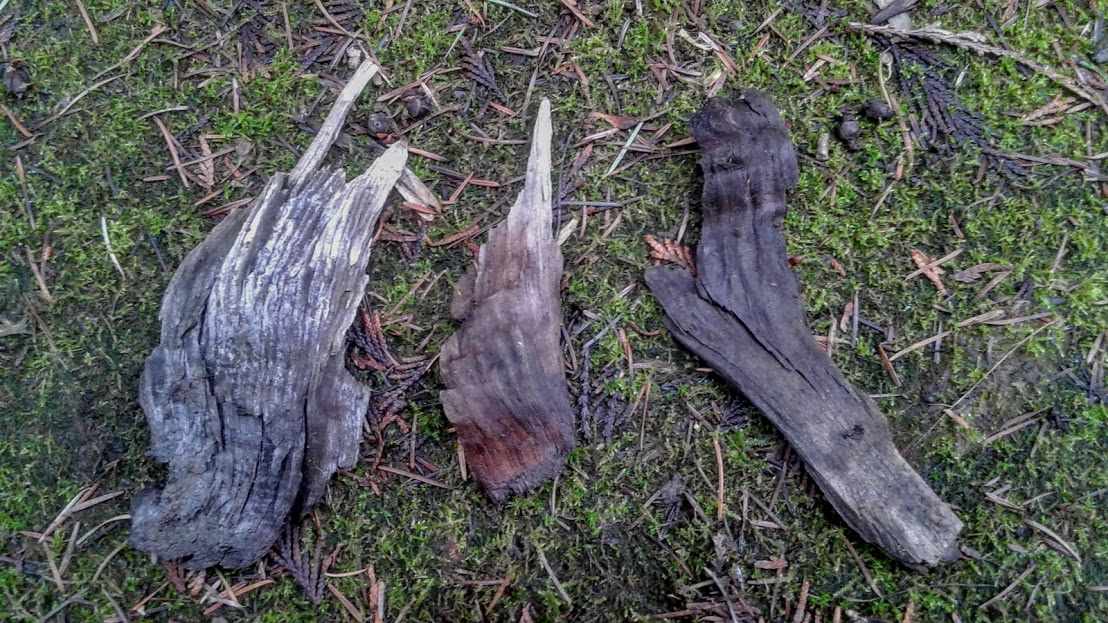
I found these three chunks of wood in the yard this week. Should they be incorporated into my landscape design somehow? The textures are very organic and cataclysmic with the pointy ends and cracks. They remind me of the alpine trees that dry out and become petrified over time. To get these to bridge a union between living trees, soil, and inorganic rocks, I think this dead wood could help tell that story. The layered swirls look so whimsical to my eye, and I want to save these and use them in an artistic way.
Formation of a landscape
In a few weeks, at the next bonsai club meeting, I'll have a chance to work on my landscape design with others and put it all together. The club member who is teaching me how to do this says we will be using no glue or cements. We'll be using native soil that is loaded with clay. This medium will cushion the rocks into place, hold moisture, and help to dam the rain water so it can drain without washing everything away. As the tree roots grow, and moss forms, the rock and clay will bind together to form a snug hold.
I'm still a bit doubtful myself that it will work, but she's been in the business of cementing rocks together with all kinds of expensive materials for her entire career, so I'll trust that she knows what she's talking about. The only kind of bonsai I have grown before have been in pots, and the soil is a very coarse mixture of pumice, lava rock, cinder, granite, and akadama clay. This is totally new territory for me. I think she's probably got a good plan for the future of the bonsai trees by using a natural earth design. As a tree grows larger than the rocks allow, you wouldn't want to have to cut it off completely from the roots because it was stuck under a rock that was glued down permanently. Can you imagine what an ordeal that would be? It could destroy the landscape or ruin the tree trying to prune it out. Instead, with this natural landscape design, over time the rocks can be reorganized freely to adapt to the needs of the trees growing on it. That makes a lot of sense actually.
She has some other cool ideas for root over rock choices I could make too. Exposed, twisting roots can become the focal point of the entire bonsai tree. Roots give the feel of strength and grounding of a tree. The more beefy the roots, the stronger the grip the tree appears to have upon the terrain.
Coming soon...
Today I did some work on my young Chinese Elm bonsai tree, which I featured in a post earlier this year when it was full of leaves. Some branches that were dominating the design of the tree were completely pruned off. When I make the new post on this tree, you'll be able to see how I totally changed its shape, simply by focusing on a better flow from the branch inter-nodes.
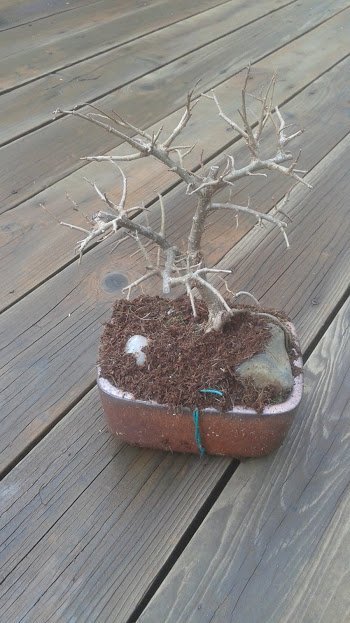
Please follow up if you would like to find out what this tree will look like throughout the pruning process. Anyone who is new to bonsai will definitely learn some valuable techniques.
Post your comments below. I don't trade upvotes with anyone, but I do often reward interesting posts from people who will interact with me.

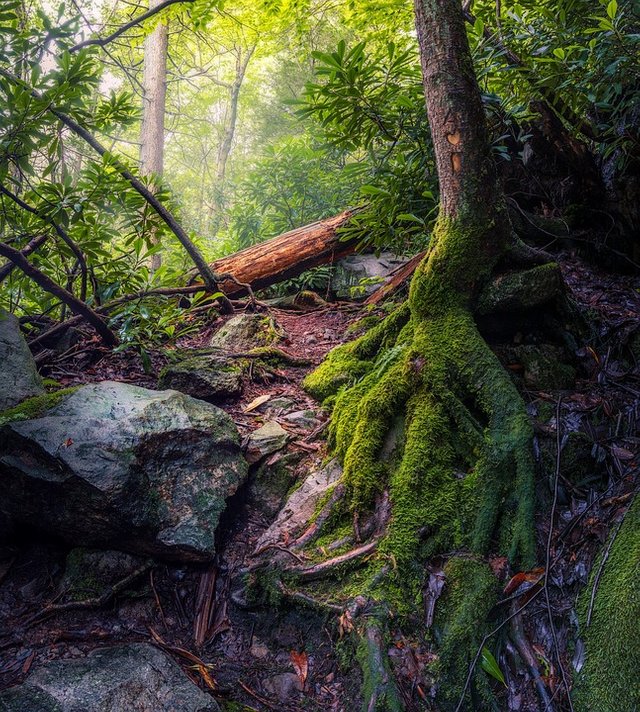
Wow. You design and build everything by yourself? I love your taste for good rocks because here it is a common scenario to build the same type of houses from the very same kind of rocks which are prepared from a special type of soil.
Downvoting a post can decrease pending rewards and make it less visible. Common reasons:
Submit
Never knew that. Even though I picked a very common rock type, I wanted it to look like normal boulder stones a person might actually find in nature from the land I live near. Choosing rocks that are too fantastic to behold is actually harder for some people to identify with. Even in life, I think people feel more emotionally connected to average people who are able to achieve great things. I want to do that with nature.
Downvoting a post can decrease pending rewards and make it less visible. Common reasons:
Submit
Have you posted more of your bonsai arrangements? I did not know such a detailed process went into making them! I love the glittery and shimmery type rocks and although everyone can relate to ordinary...showcasing the extraordinary side of nature can also be an inspiration to achieve great things. <3
Downvoting a post can decrease pending rewards and make it less visible. Common reasons:
Submit
You can explore some of my previous posts from this past summer. As winter ends, I'll be taking photos of my trees again, and discuss the type of maintenance and artistic choices to be made. I am not a professional, nor am I a firm practitioner of solid rules when it comes to my hobby.
Some of the other rocks I purchased from a rock collector are more interesting looking, but they are more egg-shaped and polished. I like to bury one special rock into the soil surface of each of my trees, and pretend that some of the crystalline rocks actually grant the trees their associated energies.
Downvoting a post can decrease pending rewards and make it less visible. Common reasons:
Submit
nice posstingan @creativetruth beautiful nature around us when seen
Downvoting a post can decrease pending rewards and make it less visible. Common reasons:
Submit
nice @creativetruth (
Downvoting a post can decrease pending rewards and make it less visible. Common reasons:
Submit
Well done. Is there any updates on the progress of this landscape?
Downvoting a post can decrease pending rewards and make it less visible. Common reasons:
Submit